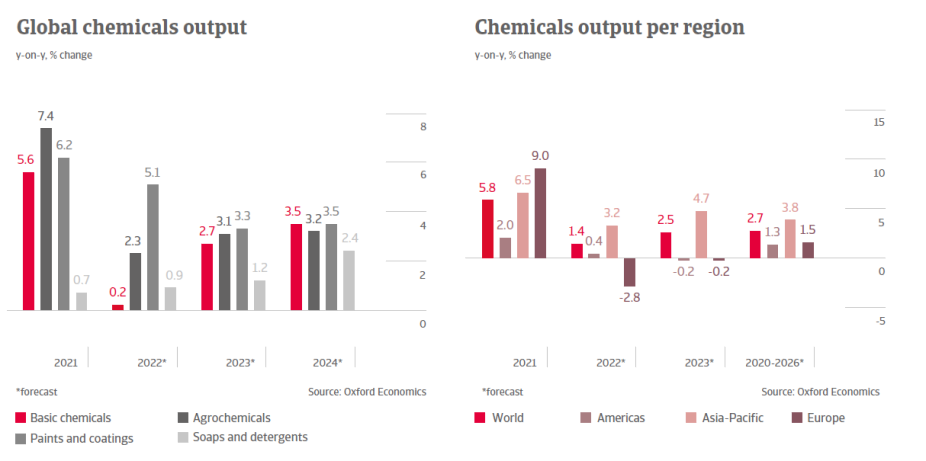Chemicals - global performance at a glance

Short-term challenges
- Shortage of gas/gas rationing: The chemical industry is very energy intensive and requires high levels of natural gas as feedstock. There is looming uncertainty about the war in Ukraine and its destabilising effect on energy supply, for Europe in particular. Major gas shortage or gas rationing measures would severely affect European chemical producers.
- Economic downturn in advanced economies: Persistent and broadening inflation pressures, and aggressive tightening from central banks in response, are increasingly weighing on the outlook for advanced economies. A persistent recession and ongoing high inflation could lead to sharply deteriorating chemicals demand from both consumers and key buyer industries such as automotive and construction.
Mid-and long-term outlook: opportunities and challenges
- Regional cost competiveness: The US shale gas boom has restructured the landscape of the global chemical industry, particularly for basic chemicals. The US chemical industry has a feedstock cost advantage due to low and more stable gas prices, attracting larger investments. Other regions, in particular Europe, are facing a long-term competitive disadvantage.
- Rising middle class in emerging markets: Rapid urbanization and increasing household purchasing power of the middle class in emerging markets should boost demand for soaps and detergents products.
- Energy transition and sustainability concerns: This will create challenges and opportunities for chemical business as companies face tighter regulatory directives and changing customer preferences. There is growing demand for ‘green’ and ethical products. This includes consumers asking where ingredients come from and assessing environmental impacts. Companies are facing major investments in decarbonisation and optimisation of their carbon footprint. Pressure from various stakeholder groups is increasing, and ESG performance is expected to be benchmarked as highly as cost and other productivity metrics.
相关资料

Industry Trends Chemicals 2022
2.03MB PDF